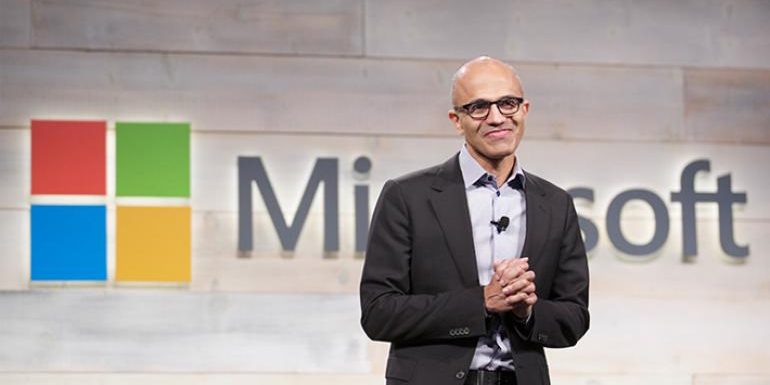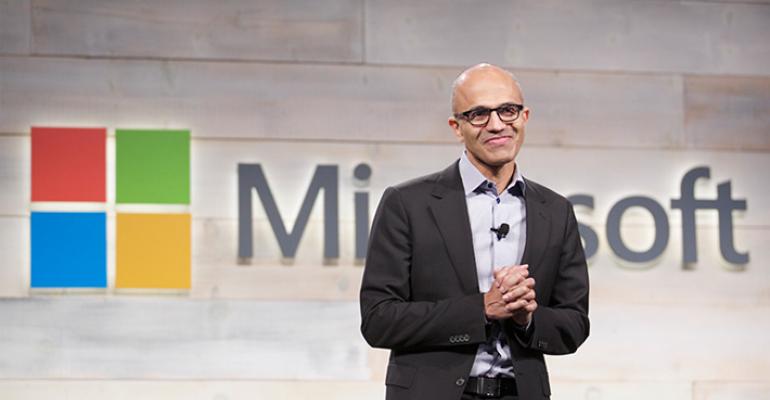

The company unveiled a new programming language and tools that help coders craft software for quantum computers, along with simulators that will let programmers test that software on a traditional desktop computer.
In the race to commercialize a new type of powerful computer, Microsoft Corp. has just pulled up to the starting line with a slick-looking set of wheels. There’s just one problem: it doesn’t have an engine — at least not yet.
The Redmond, Washington-based tech giant is competing with Alphabet Inc.’s Google, International Business Machines Corp. and a clutch of small, specialized companies to develop quantum computers — machines that, in theory, will be many times more powerful than existing computers by bending the laws of physics.
Microsoft says it has a different approach that will make its technology less error-prone and more suitable for commercial use. If it works.
On Monday, the company unveiled a new programming language called Q# — pronounced Q Sharp — and tools that help coders craft software for quantum computers. Microsoft is also releasing simulators that will let programmers test that software on a traditional desktop computer or through its Azure cloud-computing service.
The machines are one of the advanced technologies, along with artificial intelligence and augmented reality, that Microsoft CEO Satya Nadella considers crucial to the future of his company. Microsoft, like IBM and Google, will most likely rent computing time on these quantum machines through the internet as a service.
D-Wave Systems Inc. became the first company to sell a quantum computer, back in 2011, although its technology has been controversial and can only perform a certain subset of mathematical problems. Google and IBM have produced machines that are thought to be close to achieving “quantum supremacy” — the ability to tackle a problem too complex to solve on any standard supercomputer. IBM and startup Rigetti Computing also have software for their machines.
Microsoft, in contrast, is still trying to build a working machine. It is pursuing a novel design based on controlling an elusive particle called a Majorana fermion that no one was sure even existed a few years ago. Engineers are close to being able to control the Majorana fermion in a way that will enable them to perform calculations, Todd Holmdahl, head of Microsoft’s quantum computing efforts, said in an interview. Holmdahl, who led development of the Xbox and the company’s HoloLens goggles, said Microsoft will have a quantum computer on the market within five years.
“We are talking to multiple customers today,” he said, “and we are proposing quantum-inspired services for certain problems.”
These systems push the boundaries of how atoms and other tiny particles work. While traditional computers process bits of information as ones or zeros, quantum machines rely on “qubits” that can be a one and a zero at the same time. So two qubits can represent four numbers simultaneously, and three qubits can represent eight numbers, and so on. This means quantum computers can perform calculations much faster than standard machines and tackle problems that are way more complex.
Applications could include things like creating new drugs and new materials or solving complex chemistry problems. The “killer app” of quantum computing is discovering a more efficient way to synthesize ammonia for fertilizer — a process that currently consumes 3% of the world’s natural gas, according to Krysta Svore, who oversees the software aspects of Microsoft’s quantum work.
The technology is still emerging from a long research phase, and its capabilities are hotly debated. Researchers have only been able to keep qubits in a quantum state for fractions of a second. When qubits fall out of a quantum state they produce errors in their calculations, which can negate any benefit of using a quantum computer.
Microsoft says it uses a different design — called a topological quantum computer — that in theory will create more stable qubits. This could produce a machine with an error rate from 1,000 to 10,000 times better than computers other companies are building, Holmdahl said.
Reducing or correcting the errors in quantum calculations is essential for the technology to fulfill its commercial potential, said Jonathan Breeze, a research fellow working on advanced materials at Imperial College London.
In the race to commercialize a new type of powerful computer, Microsoft Corp. has just pulled up to the starting line with a slick-looking set of wheels. There’s just one problem: it doesn’t have an engine — at least not yet.
The Redmond, Washington-based tech giant is competing with Alphabet Inc.’s Google, International Business Machines Corp. and a clutch of small, specialized companies to develop quantum computers — machines that, in theory, will be many times more powerful than existing computers by bending the laws of physics.
Microsoft says it has a different approach that will make its technology less error-prone and more suitable for commercial use. If it works.
On Monday, the company unveiled a new programming language called Q# — pronounced Q Sharp — and tools that help coders craft software for quantum computers. Microsoft is also releasing simulators that will let programmers test that software on a traditional desktop computer or through its Azure cloud-computing service.
The machines are one of the advanced technologies, along with artificial intelligence and augmented reality, that Microsoft CEO Satya Nadella considers crucial to the future of his company. Microsoft, like IBM and Google, will most likely rent computing time on these quantum machines through the internet as a service.
D-Wave Systems Inc. became the first company to sell a quantum computer, back in 2011, although its technology has been controversial and can only perform a certain subset of mathematical problems. Google and IBM have produced machines that are thought to be close to achieving “quantum supremacy” — the ability to tackle a problem too complex to solve on any standard supercomputer. IBM and startup Rigetti Computing also have software for their machines.
Microsoft, in contrast, is still trying to build a working machine. It is pursuing a novel design based on controlling an elusive particle called a Majorana fermion that no one was sure even existed a few years ago. Engineers are close to being able to control the Majorana fermion in a way that will enable them to perform calculations, Todd Holmdahl, head of Microsoft’s quantum computing efforts, said in an interview. Holmdahl, who led development of the Xbox and the company’s HoloLens goggles, said Microsoft will have a quantum computer on the market within five years.
“We are talking to multiple customers today,” he said, “and we are proposing quantum-inspired services for certain problems.”
These systems push the boundaries of how atoms and other tiny particles work. While traditional computers process bits of information as ones or zeros, quantum machines rely on “qubits” that can be a one and a zero at the same time. So two qubits can represent four numbers simultaneously, and three qubits can represent eight numbers, and so on. This means quantum computers can perform calculations much faster than standard machines and tackle problems that are way more complex.
Applications could include things like creating new drugs and new materials or solving complex chemistry problems. The “killer app” of quantum computing is discovering a more efficient way to synthesize ammonia for fertilizer — a process that currently consumes 3% of the world’s natural gas, according to Krysta Svore, who oversees the software aspects of Microsoft’s quantum work.
The technology is still emerging from a long research phase, and its capabilities are hotly debated. Researchers have only been able to keep qubits in a quantum state for fractions of a second. When qubits fall out of a quantum state they produce errors in their calculations, which can negate any benefit of using a quantum computer.
Microsoft says it uses a different design — called a topological quantum computer — that in theory will create more stable qubits. This could produce a machine with an error rate from 1,000 to 10,000 times better than computers other companies are building, Holmdahl said.
Reducing or correcting the errors in quantum calculations is essential for the technology to fulfill its commercial potential, said Jonathan Breeze, a research fellow working on advanced materials at Imperial College London.
The lower error rate of Microsoft’s design may mean it can be more useful for tackling real applications — even with a smaller number of qubits — perhaps less than 100. Svore said her team has already proved mathematically that algorithms that use a quantum approach can speed up machine learning applications substantially — enabling them to run as much as 4,000 times faster. (Machine learning is a type of artificial intelligence behind recent advances in computers’ ability to identify objects in images, translate languages and drive cars).
industryweek.com

